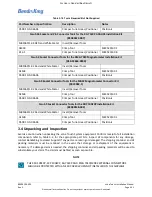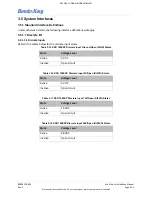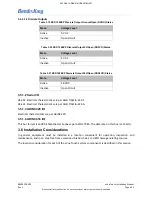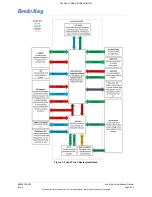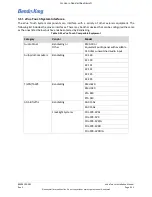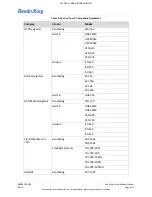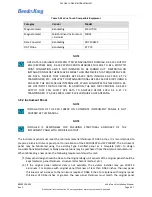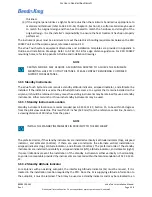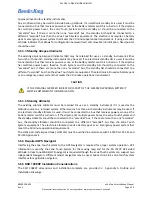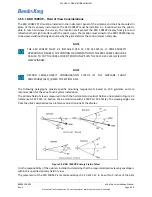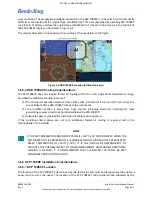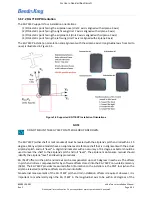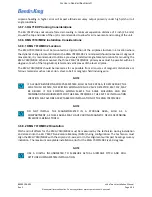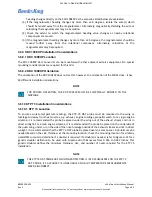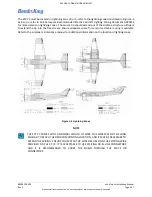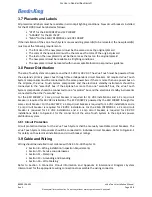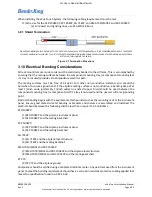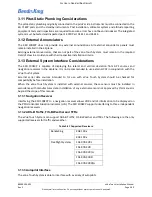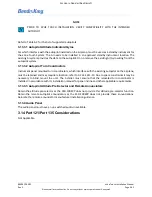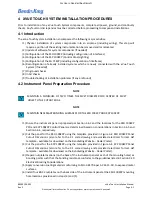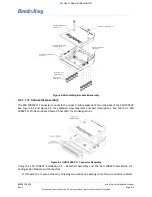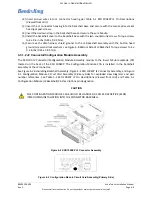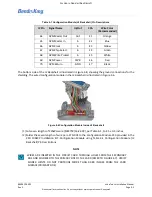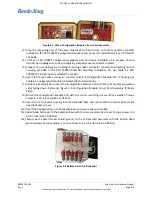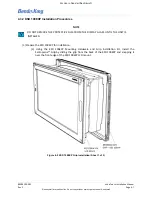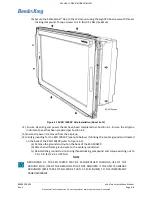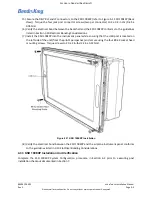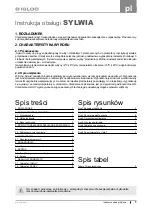
89000109-002
xVue Touch Installation Manual
Rev 2
Page 3-25
© Honeywell International Inc. Do not copy without express permission of Honeywell.
For Use in Non-Certified Aircraft
3.6.8.3 Magnetic Interference
3.6.8.3.1 Ground Checks - Prior to Installation of the Magnetometer
Prior to the installation of the KMG 7010/MD32, check for the following effects to locate an installation
area that does not have a distorting or varying magnetic field:
(1) Hard Iron Effects: Ensure that the magnetometer mounting location is away from ferrous
materials (i.e., iron, carbon steel, stainless steel, nickel and cobalt) which can distort sensing of
Earth’s magnetic field. A precision compass can be used to ascertain whether there is a hard iron
effect by checking for needle swing when moving it near the proximity of the magnetometer.
(2) Soft Iron Effects and Motion Induced Eddy Currents: Ensure that the potential magnetometer
mounting location is away from wires carrying high, intermittent, alternating current, and
rotational surfaces which can induce heading errors. A precision compass can be used by
checking for no needle swing when the electrical state of all nearby wires is varied (energized/de-
energized) and all rotational components nearby moved.
(3) Electrical Current Return Paths: When an airplane device is grounded through the airframe the
electrical current returning to the power source will flow through the airframe. This returning
current can cause significant magnetic field interference when the magnetometer is located
alongside it. Isolate the specific electrical device causing the current and ground the device using
a wire rather than the airframe. The wire should be routed alongside the devices power wire to
minimize the generated magnetic field.
3.6.8.3.2 Ground Checks - After Magnetometer Installation and Compass Swing
Each of the steps of this procedure are to be performed at the four major compass rose orientations,
North, East, South and West, after a compass swing has been completed. The procedure should be
performed at magnetically undisturbed portion of the apron. Magnetic heading should be determined
either by using calibrated compass rose area or by calibrated magnetic compass. One acceptable method
of obtaining heading at a compass rose is to align both main landing gear on a given compass rose radial
line and the resultant aircraft heading will be perpendicular to the radial line.
(1) Check the extent to which the magnetometer heading value varies as the electrical state of each
nearby wire is energized/de-energized and each nearby electro-mechanical component
(rotational component) is exercised through its range of motion.
(2) The proceeding step can be accomplished by setting the correct magnetometer orientation and
tilt angles in the KG 71EXP configuration and maintenance tool (CMT) application. Then power up
the complete xVue Touch System in normal mode (prior compass compensation) and observe
NOTE
REFER TO AIRPLANE DOCUMENTATION TO DETERMINE A LOCATION AND ORIENTATION
FOR THE KMG 7010/MD32. REFER TO THE AIRPLANE’S MAINTENANCE MANUAL FOR THE
RECOMMENDED METHOD OF LEVELING THE AIRPLANE.
NOTE
FOR PROPER OPERATION, THE KMG 7010/MD32 MUST BE ELECTRICALLY BONDED TO THE
AIRPLANE.

